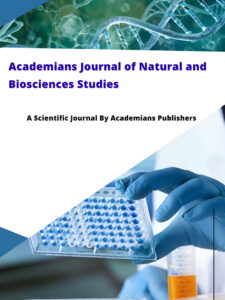Physiological Effects of Liver Cirrhosis on Abdominal Adipose Tissue
Author(s):
Ahmed Jabbar Obaid
Journal:
Academians Journal of Natural and Biosciences Studies
Keywords: Liver Cirrhosis, Abdominal Fat Cells, Visceral Adipose Tissue (VAT), Hepatic Fibrosis.
Abstract
Liver cirrhosis, a progressive and irreversible condition marked by hepatic fibrosis and architectural distortion of the liver, exerts profound physiological effects on peripheral metabolic tissues, including abdominal fat cells. Visceral adipose tissue (VAT) plays an active role in systemic metabolism and communicates bidirectionally with the liver through adipokines and free fatty acids (FFAs). In cirrhosis, metabolic dysregulation—characterized by insulin resistance, chronic inflammation, and altered adipokine secretion—disrupts normal adipocyte function. This results in enhanced lipolysis, increased circulating FFAs, and an inflammatory adipose microenvironment, all of which contribute to hepatic fat accumulation and fibrogenesis. Key adipokines such as leptin and adiponectin become dysregulated, further influencing hepatic stellate cell activation and promoting fibrotic progression. Additionally, portal hypertension and nutritional deficiencies associated with cirrhosis exacerbate adipose tissue remodeling and lead to fat wasting and sarcopenia. Understanding the pathophysiological interplay between cirrhotic liver changes and abdominal fat cell function is crucial for identifying novel metabolic targets in the treatment and management of advanced liver disease.

